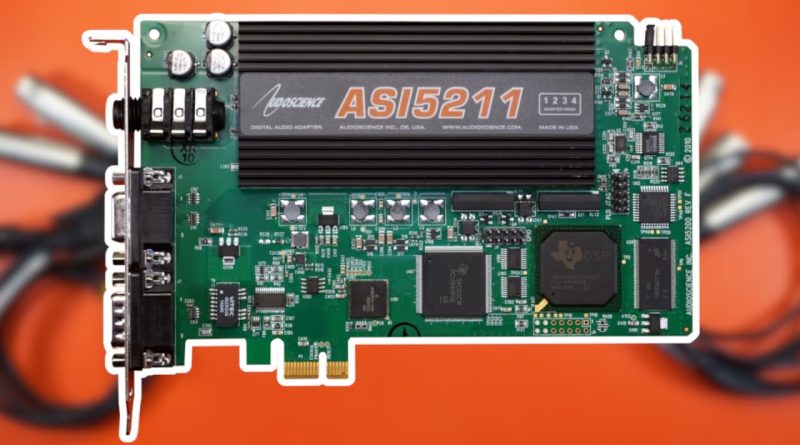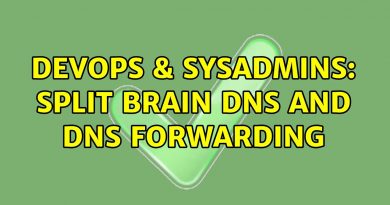Broadcast Hardware On Linux – AudioScience ASI5211
Join me on an adventure filled with fussy hardware, bad documentation, and tech gremlin wrangling! The ASI5211 was a neat bit of hardware for its time. Having a MIC preamp and onboard DSP stapled to a PCIe card was a cool party trick. Let’s see if we can get it working on a modern Linux system.
Enjoy my content? Consider becoming a Patron: https://www.patreon.com/interfacinglinux
RELATED PRODUCTS [Affiliate Links]
AudioScience ASI5211: https://ebay.us/7SdpNn
LINKS
Read the review: https://interfacinglinux.com/2024/07/10/audioscience-asi5211/
Hardware Wishlist: https://www.amazon.com/hz/wishlist/ls/2TT1LCDTNHGSX
X: https://twitter.com/VennStone
Have questions about your Linux setup? Ask in the forums. I’m here to help.
TIMESTAMPS
00:00 Intro
00:26 Hardware overview
01:47 Configuring onboard DSP
02:19 Installing Linux
02:25 Dangers of bridge chips
04:12 Installing firmware
05:42 Mixer controls
06:02 Desktop audio
06:19 Jack sound server
07:00 Installing vendor drivers
07:23 Driver support limitations
08:19 Installing vendor drivers, again
08:52 Jack with vendor drivers
09:41 Verdict
* Like comment and subscribe for more! Or don’t, I’m not your boss.*
Amazon Affiliate Links
Interfacing Linux is a participant in the Amazon Services LLC Associates Program, an affiliate advertising program designed to provide a means for sites to earn advertising fees by advertising and linking to Amazon properties including, but not limited to, amazon.com. As an associate we earn from qualifying purchases.
eBay Affiliate Links
Some of our posts at Interfacing Linux contain eBay affiliate links. If you click on an affiliate link and later make a purchase, we may receive a small commission. Money earned via affiliate links helps pay the fees to keep this site up and running.
by Interfacing Linux
linux web server




Yeah… welcome to broadcast. Had these cards on air the almost 20 years I have been doing station engineering. A just as finicky automation software called Simian requires them.
i happen to have a few asi cards and bob boxes after switching to Wheatstone
Hearing about the bridge chip gave me a shudder. I was just going through hell trying to pass through a firewire card to a vm because of its bridge chip.
Just found your channel, cool content, subscribed.
yuck.. the M-Audio Delta1010LT (pci) are cheap and ive had latency 4msec pretty easy. full harware control in linux as well
Couldn't you downgrade the kernel in any Linux distribution? Also for underruns you can dedicate a core to a process. There's another problem with the SMI interrupt on CPUs too. You can disable that. I just have a feeling there's more that can be done. The lowest latency Intel CPUs are Atoms and Xeons. Cores kinda suck as far as latency goes. Some old AMD chips were stupid fast latency wise too. Latency has nothing to do with performance. There's different kinds of fast. Speculative execution tends to be high latency. Deep pipelines and all of that stuff.
ASUS NFORCE DELUXE GOLD for AMD Athlon XP 3200+ (Shared mostly due to the audio system on this mobo, that and the fact that moving from a normal motherboard to this one wihtout changing anything else made my system feel like I had moved the CPU one generation forward when it was still the same, yeah that much of a boost)
Features that made this motherboard the BEST motherboard performance wise for an AMD CPU:
– Dual Channel (still on the chipset at the time)
– Actually Hardware Accelerated Sound using 3 DSPs (best onboard audio card for that generation, even the majority of addon cards lagged behind it in performance AND audio quality at the time, good filtered PSU needed though)
– Proper SATA Support
– Nice NVidia onboard graphics (one of the last generations where such low end GPUs were on the chipset instead of CPU itself)
4:31 sick reference bro
Just discovered you, I'm a video broadcast engineer/arch, nice to see someone exploring what's possible with the older hardware.
I picked some Matrox MX02 hardware out of the recycling bin and I'm slightly disappointed that there aren't drivers for modern systems. I have a spare old MacBook but it's sad that I can't make use of it in Linux.
so happy to find your channel!
Im not gay, but your voice does things to me
Wow cool channel nice content, i have been involved with e-mu pci(e) sound interfaces on Linux and have made tests for regression fixing so i know the drill here, still nice seeing wired obscure hardware being supported on Linux
I realy like linux however all this nonsense is why it will never be main stream want to do anythink dick with it for a hour want to do somthing simple get comfey with comand line
I worked at a radio station a few years ago as a board op for sports coverage – thier station control system (music storage, queuing, etc) ran some weird version of Debian, on an ancient rack mounted PC of some sort. Had to be rebooted every 48 hours or so (probably an age issue) which meant manually jockeying CDs while it restarted. Fun stuff. Never thought that would entail an entire ecosystem of drivers and software support specific to linux, but it makes sense. Neat stuff! Thanks for the video!!
So if you preconfigured your DSP on Windows you could presumably monitor post-DSP output with near-zero latency, no?
bro is straight up bat man
Pretty neat, never heard of AudioScience, but looks awesome. I picked up an AJA Kona LHe earlier this year to throw into one of my home servers for capturing analog video in original quality (without upscaling or deinterlacing). It comes with a 1U breakout box (KL-BOX) that allows connecting SDI, AES/EBU, HDMI, most types of analog video (Y/C, Composite, and most variants of Component including RGB), and has both balanced XLR and unbalanced jacks. It has both inputs AND outputs, although I'm not entirely sure how to get the video outputs to do anything but passthrough. AJA has official Linux support via its "ajavideo" & ALSA drivers, but it doesnt have V4L or V4L2 support… there is a random patch floating around where someone added an ajavideo source to ffmpeg, but havent tested it…
E-MU 1820M
Is Your next project!😂
Haha we use that same card for voicer/newsticker at work. It only sends text to voice to AES out to an embedded SDI stream on ch 7/8, no where near it’s capacity seems like such a waste, but critical for severe weather crawls . Very cool board!
Try Slackware64 15.0….. it comes as default with kernel 5.15
Linux Mint today- "uname -srm"
"Linux 5.15.0-113-generic x86_64" …
I was going to ask why not just use pipewire, but then I remembered we're dealing with proprietary drivers that don't even have proper jack support LOL
i love how you synched the step zoom with the cadence of your voice for comedic effect!
What about noise? Internal audio interfaces have always suffered from higher noise floors due to the all the digital bus madness going on inside a PC.